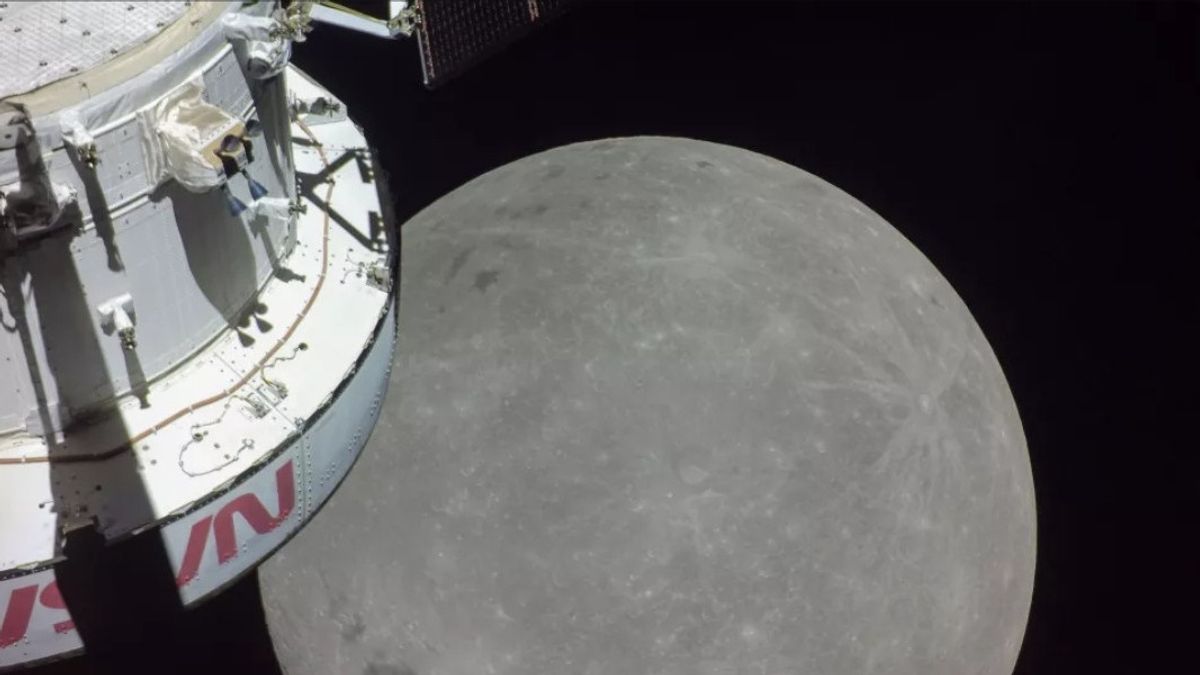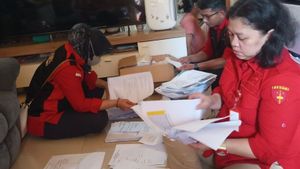JAKARTA - NASA said the flight test of the unmanned Artemis I mission to the Moon was successful. Implying, the next mission will be carried out soon.
The Artemis I mission also proved NASA's space rockets, spacecraft, and ground systems needed for launch and recovery ready to fly astronauts on future missions to the Moon.
"We learned as much as we could from Artemis I to ensure we fully understand every aspect of our system and incorporate the lessons learned into how we plan and fly manned missions," said NASA associate administrator for the Exploration of Systems Development Mission Directorate, Jim Free.
"Flying crew safely is our top priority for Artemis II," he added.
Since the 2022 flight, engineers at NASA extensively reviewed data to confirm initial observations from the Space Launch System (SLS) rocket mission and the Orion spacecraft on a mission 1.4 million miles beyond the Moon.
Both initial and more comprehensive analysis of the SLS's debut flight indicated the rocket flew as planned, with all of its systems exceeding performance expectations.
After a near complete combustion of the trans-lunar injection, the interim cryogenic propulsion stages of the rocket and Orion were successfully separated, sending the spacecraft into orbit its initial target, and then placing it on a trajectory to the Moon.
Engineers with NASA's Exploration Ground Systems program completed a detailed assessment of the mobile launcher immediately after launch.
Hear the stories of women who make a galactic difference on Earth, from driving a rover on Mars to studying our changing planet: https://t.co/gzUxQaAJC8
Commemorate #InternationalWomensDay and follow @WomenNASA to discover their stories. pic.twitter.com/swbB44tp4o
— NASA (@NASA) March 8, 2023
Analytical Results of NASA Engineers on the Artemis I Mission
Although the launcher suffered more damage than expected to the 8.8 million pounds of thrust generated on take-off by the rocket, the damaged components have been repaired alongside planned upgrades in preparation for Artemis II, the first flight carrying an astronaut on board.
Damage to the mobile launchers included corrosion to air-filled pneumatic fuel lines, cryogenics, loose welds in the piping of about 60 panels, damaged cabinets with instrumentation, damage to several elevators and blast shields, which are currently being repaired.
Modifications to the mobile launcher to support future Artemis missions are ongoing, including incorporating elements to support an emergency egress system on the launch pad.
The team also extensively reviewed more than 155 gigabytes of Orion data to confirm the spacecraft's successful performance during its nearly 270,000-mile journey beyond the Moon, making it one of the farther aircraft that has ever flown anywhere else, while also being built for humans.
Orion completed 161 test objectives to fully demonstrate every aspect of the spacecraft, including 20 objectives added mid-flight.
Data shows the European-made service module generates 20 percent more power than originally expected and consumes about 25 percent less power than expected.
All dynamic separation events of the spacecraft, such as separation of the launch abort system during ascent and parachute deployment during landing, which involved a total of 375 pyrotechnic devices were completed without problems.
Splashdown, which was moved 300 miles south due to bad weather, occurred 2.4 miles from the target landing site, according to requirements.
Upon return to the Kennedy Space Center (KSC) in Florida, USA, avionics components intended for reuse on the Artemis II were removed and updated for integration, including the phased array antenna, vision processing unit, GPS receiver, and inertial measurement unit.
All Artemis I avionics components have been integrated into the Artemis II crew module. In addition, NASA is also examining more closely the data for two observations from the flight.
Engineers noted variations across the appearance of Orion's heat shield where the ablative material that helps protect the capsule from extreme heat during re-entry was reduced differently than expected.
Post-flight inspection revealed large amounts of genuine Avcoat material left on the Orion. Thermal protection system experts have correlated descent times through the atmosphere with data from hundreds of sensors and collected imagery and video. The team is assessing this data set to understand the phenomenon.
Furthermore, the experts also continued to assess the problem seen during the flight where the lock-up current limiter was opened without command several times during the mission.
The switch, which is a circuit breaker-like device, part of the conditioning, power distribution unit responsible for taking the power generated by the solar panels and preparing it for distribution to the system, helps control power to the components in the service module.
Engineers are reviewing the flight data to understand the source of the problem and plan to carry out the test in a flight-like configuration.
SEE ALSO:
Progress on Mission Artemis II
So far, NASA has made progress in assembling, testing, and processing elements for Artemis II ahead of the final mission set for launch in November 2024.
Heat shields will be attached to the crew module in May, and the service module will be connected prior to integrated testing. The SLS solid motor segment and core stage will be delivered to KSC later this year, after the RS-25 engine and engine parts are connected to the other completed stages.
The mission team hopes to transport the mobile launcher to launch pad 39B this summer for testing, including an evaluation of the emergency egress capability required for the Artemis II.
Meanwhile, the recovery team, along with personnel from the Department of Defense, recently completed rigorous testing of a new crew module test article to support the Artemis II effort and will conduct open-water recovery testing in the coming months, to ensure the crew is removed quickly and safely from the spacecraft.
The English, Chinese, Japanese, Arabic, and French versions are automatically generated by the AI. So there may still be inaccuracies in translating, please always see Indonesian as our main language. (system supported by DigitalSiber.id)


















